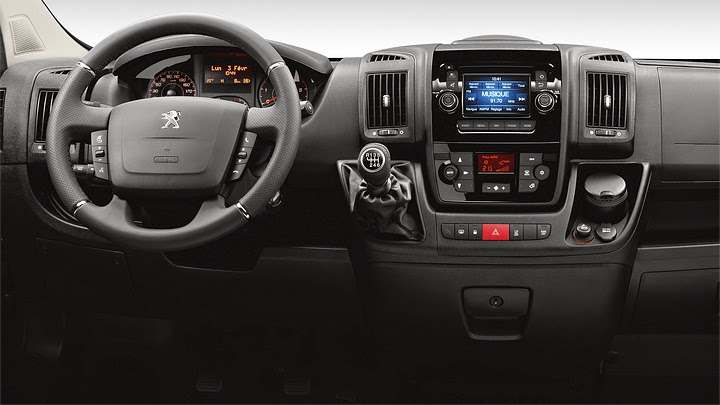
Boxer comes from the time when PSA’s “related products” were actually the very same car, which only received small retouches in order to switch from one logo to the other – besides the aforementioned multivans, Saxo and 106 are other example of that. Such situation only gets enhanced when we consider the models whose project is shared with other companies: Mitsubishi i MiEV was borrowed as C-Zero and iOn, while Toyota Aygo shares its genes with C1 and 107/108. And when it comes to Fiat, we get to a partnership which in nowadays accounts for four different vans sold by each of the three. This article’s release is the youngest member of the latter, coming right after the facelifted Fiat Ducato and Citroën Jumper.
As the pictures show, PSA has given the same amount of effort into both its vans’ updates, which was somewhat smaller to Fiat’s. Boxer uses the very same renewed front fascia except for the main grille, which features a big rectangle here in order to resemble other Peugeots. Even though a commercial van can’t exactly be mistaken to 308 or 508, it’s always very nice when an automaker gives more attention to a vehicle’s styling. Besides, if you take a look at the outgoing van, there won’t be much doubt about how much it needed to be redesigned. Just like Citroën’s, Peugeot’s intention seems to be updating its product while keeping its proposal, therefore leaving Fiat free to seek new buyers with Ducato being the only one to invest on more sophisticated trim levels.










The cabin still carries up to three, but also still does it with plenty of comfort and space. Soundproofing received some improvements, ensuring driving comfort along with high-quality materials and comfortable seats. There is a new infotainment central, which features Bluetooth connectivity, multimedia audio system reverse camera and navigation system, everything controlled by a 5” touchscreen. The passenger versions also bring Isofix structure at second and third seat rows, and the possibility of folding the rear seats in order to increase the baggage space. But if your biggest concern is safety, you’ll also find items like stability control and lane-departure warning, just like its siblings. Everything with three options of height and three options of length.
Another interesting common point is having many storage areas around the cabin, which are very handy for both passengers and driver – the latter one gets an overhead compartment which takes up to 22L and is invisible from the outside. When it comes to the powertrain, there will be the same turbo-diesel options seen in Jumper. Those will be the 2.2L unit in HDi 110, HDi 130, HDi 150 and the last two also as e-HDi, which means they’ve added fuel-efficiency equipments such as start/stop system. The most powerful is a 3.0L propeller, which is capable of 180 hp and 40.8 kgfm (HDi 180). Given that facelifts usually don’t take too long to arrive, the expectations for seeing the renewed Boxer for sale could start later this year.